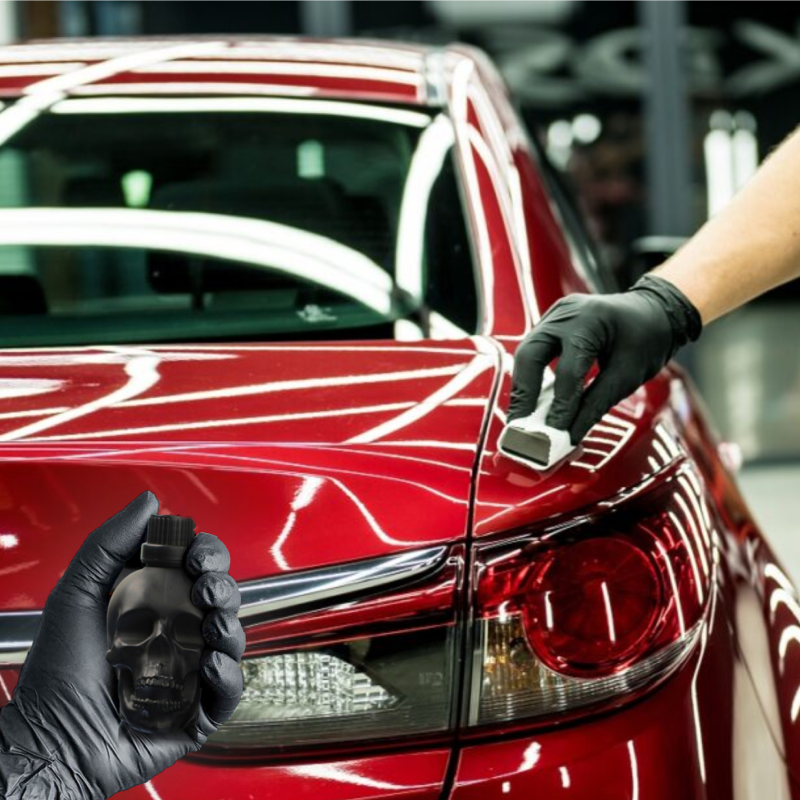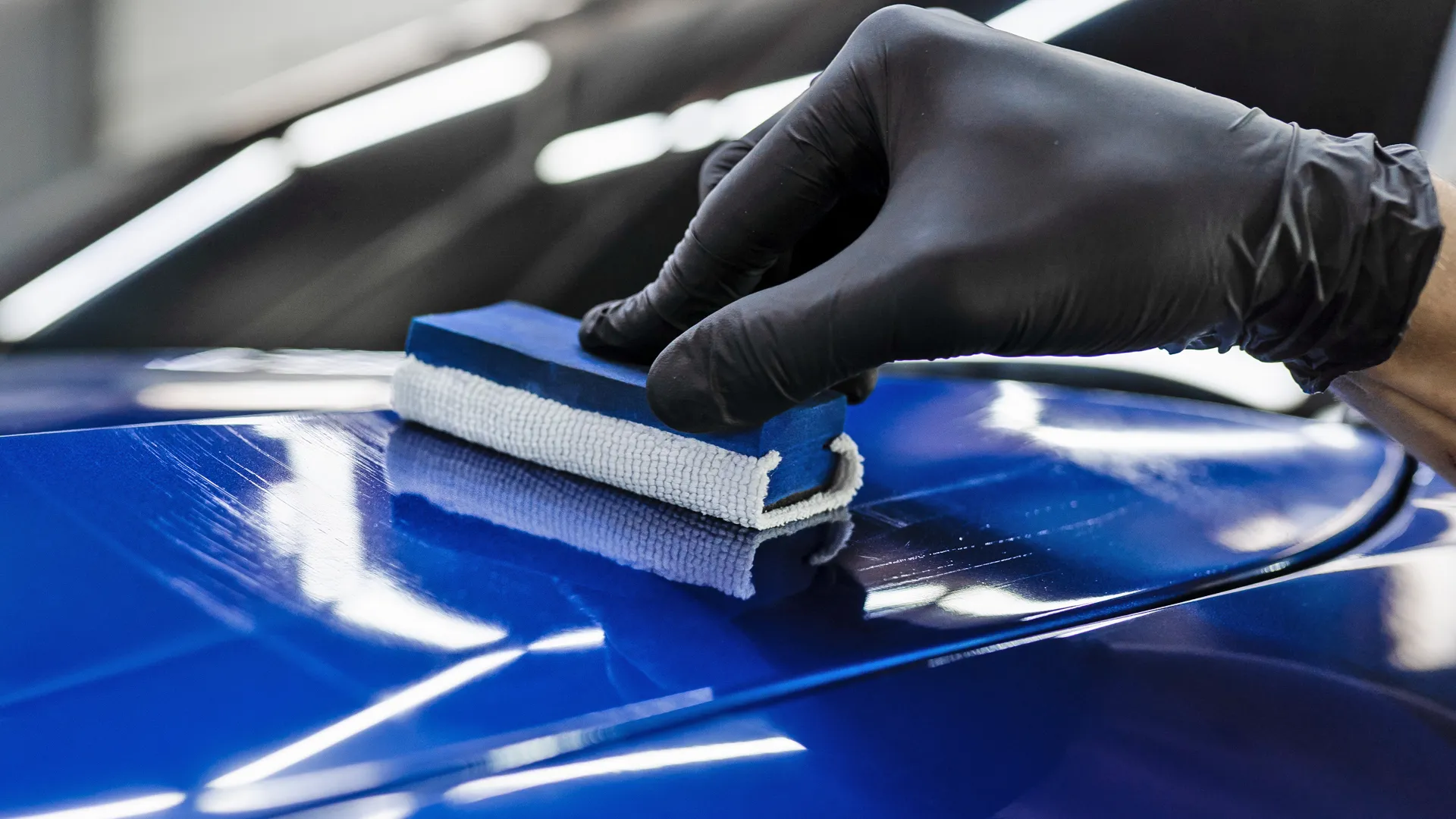A Comprehensive Overview to the Sorts Of Ceramic Finish on the marketplace
Ceramic finishings have actually arised as a critical service throughout various sectors due to their one-of-a-kind residential or commercial properties and applications. As we discover the unique qualities and applications of these layers, the ramifications for efficiency and longevity become progressively noticeable, increasing questions regarding which kind could best fit your demands.
Understanding Ceramic Coatings
Ceramic finishes are advanced safety options that have actually gained appeal in numerous markets, especially in automotive and aerospace applications. These finishes include a fluid polymer that, when cured, forms a resilient, hydrophobic layer on the surface of the substrate. This layer offers enhanced resistance to ecological pollutants, UV radiation, and chemical exposure, therefore prolonging the life and visual appeal of the underlying material.
The basic part of ceramic finishings is silica, which adds to their hardness and sturdiness. The application procedure commonly entails surface preparation, application of the covering, and curing, which can be achieved with heat or UV light. As soon as healed, ceramic finishings display remarkable bonding residential properties, enabling them to stick strongly to a range of surface areas, consisting of steels, plastics, and glass.
Along with their safety functions, ceramic finishings additionally offer convenience of maintenance. Their hydrophobic nature decreases the adherence of dirt and crud, making cleansing easier and less frequent. On the whole, the adoption of ceramic coatings stands for a significant advancement in surface area protection innovation, offering both functional and aesthetic advantages across numerous fields.
Types of Ceramic Coatings
Various sorts of ceramic finishings are readily available, each made to satisfy details performance requirements and applications - Car Detailing. The most common kinds consist of:
Silica-based Coatings: These finishings mostly consist of silicon dioxide and are known for their sturdiness and chemical resistance. They are commonly used in vehicle and commercial applications.
Titanium Dioxide Coatings: Prominent for their photocatalytic buildings, titanium dioxide coatings are typically used in settings where self-cleaning and antifungal buildings are desirable, such as in structure products and automotive finishes.
Zirconia Coatings: Characterized by their high-temperature stability and thermal resistance, zirconia finishes are utilized in applications such as generator engines and high-performance automobile parts.
Alumina Coatings: Showing superb hardness and thermal stability, alumina coatings are frequently made use of in wear-resistant applications, consisting of reducing devices and commercial machinery. - Paint Protection Film
Hybrid Coatings: Incorporating the residential properties of different products, hybrid coverings offer improved performance qualities, making them appropriate for unique and demanding applications.
Each kind of ceramic coating offers distinctive purposes, permitting users to pick one of the most suitable remedy based upon details ecological conditions and efficiency demands.
Benefits of Ceramic Coatings
Coatings play a vital duty in enhancing the performance and longevity of surface areas throughout numerous sectors. Ceramic coatings, particularly, offer numerous benefits that make them significantly prominent among makers and consumers alike. One of the main advantages is their exceptional resilience. These layers are resistant to scratches, chemicals, and UV rays, making sure that the underlying surface remains protected with time.
Along with toughness, ceramic coatings offer excellent hydrophobic properties, enabling for simple cleaning and maintenance. This water-repellent nature minimizes the adherence of dirt, gunk, and various other contaminants, which can prolong the visual charm and functionality of the surface. Moreover, ceramic finishes can significantly enhance thermal resistance, making them perfect for applications that sustain high temperatures.

Application Refine
When applying ceramic layers, a thorough technique is important to achieve optimum outcomes. The application procedure typically begins with thorough surface preparation. This includes cleaning, decontaminating, and polishing the surface to eliminate all contaminations, including dirt, grease, and prior waxes or sealants. A clean surface area makes sure appropriate bond of the finishing.
When the surface is prepped, the following step is to apply the ceramic finish. This can be done utilizing an applicator pad or a microfiber fabric, guaranteeing also protection. It is crucial to operate in little sections to maintain control and stop premature curing. The layer must be used in thin layers, as thicker applications can bring about unequal finishes.
After application, the layer calls for a details curing time, usually ranging from a couple of hours to a full day, relying on the item. Throughout this time around, it is important to prevent exposure to dampness or impurities. A mild buffing may be necessary after treating to boost the gloss and remove any high spots. Complying with these actions diligently will make best use of the efficiency and long life of the ceramic finish, supplying a long lasting safety layer for the surface area.
Upkeep and Longevity
To make sure the longevity and performance of a ceramic finish, routine scratch repair sarasota upkeep is important. Ceramic layers, known for their sturdiness and protective top qualities, need details care routines to maximize their lifespan and performance. The initial step in upkeep includes routine cleaning with pH-neutral soap, preventing extreme chemicals that can degrade the coating. It is a good idea to wash the vehicle on a regular basis, ideally every 2 weeks, to avoid the accumulation of pollutants that could endanger the covering's stability.
Along with normal washing, routine examinations are vital. Seek signs of wear or damages, such as hydrophobic buildings reducing or surface imperfections. If needed, a light gloss may be related to renew the covering without removing it away.
Additionally, the application of a booster spray can improve the finish's hydrophobic results and recover its gloss. This is specifically valuable for finishes that have remained in usage for a prolonged period. Ultimately, by adhering i loved this to these maintenance techniques, one can considerably prolong the life of a ceramic finish, ensuring that it remains to offer optimal protection versus ecological factors and maintain the visual allure of the automobile.
Conclusion

 Haley Joel Osment Then & Now!
Haley Joel Osment Then & Now! Ashley Johnson Then & Now!
Ashley Johnson Then & Now! Mackenzie Rosman Then & Now!
Mackenzie Rosman Then & Now! Monica Lewinsky Then & Now!
Monica Lewinsky Then & Now! Tina Louise Then & Now!
Tina Louise Then & Now!